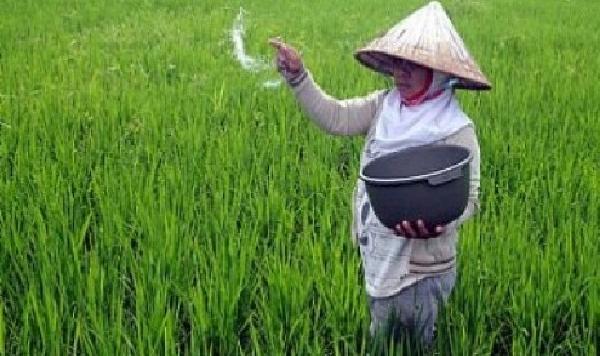Oleh Baheramsyah, Senin, 25 Januari 2016 | 15:51 WIB - Redaktur: Filmon Warouw - 1K
Jakarta, InfoPublik - Ministry of Agriculture’s Head of Agricultural Data and Information System Center Suwandi said that based on Central Statistics Agency’s (BPS) Prediction Numbers II of 2015, rice production increased by 5.85 percent, 4.34 percent for corn, and 2.93 percent for soybean compared to 2014.
According to him, the hard work of farmers supported by instructors, the Indonesian Military (TNI), the Farmers and Fishermen Community (KTNA), the Association of Indonesian Farmers (HKTI), universities, government agencies, the Commission IV of the House of Representatives, and other parties shows the results. This joint support spurs increased the production in order to achieve food sovereignty as mandated in Nawacita—Jokowi Nine Priorities Agenda.
"Chili, onion, sugar cane and others production also increases. The increase in production followed by downstream management and food administration are believed to contribute directly to the welfare of farmers," Mr. Suwandi said in Jakarta, Sunday (1/24).
According to him, Farmers Exchange Rate (NTP) indicator can describe the level of farmers’ welfare. NTP is calculated from the ratio of the index received by farmers with the index expended by farmers.
“NTP indicator has several weaknesses, one of them is farmers expended index covers all aspects of household spending so it does not figure the real expenses for their farm," he added.
Therefore, in response to some of the weaknesses of the NTP, Agricultural Enterprises Exchange Rate (NTUP) indicator is also used. He explained that the welfare of farmers in 2015 is better than 2014 figured from either NTP or NTUP indicator.
BPS’ 2016 data cite that national NTUP of 2015 is at 107.44 or up by 1.40 points compared to 2014 at 106.04. In detail, crops NTUP of 2015 increased by 2.91 points, livestock and horticulture up by 2.03 and 1.35 points. Meanwhile, plantations NTUP decreased by 2.14 points because its mostly export-oriented products were affected by the global price and crisis.
"In line with NTUP, the NTP indicator also shows increases. Crops NTP of 2015 went up by 1.48 points and livestock by 0.75 point. While plantations down by 4.12 point due to the impact of global market," he said.
Based on NTP and NTUP of 2015 data, the apparent decline in plantation NTUP signals the urgency of immediately settlement of the trade of palm, rubber, and others issues. Sharp price decline has hit plantations income down to the poverty line. Production escalation becomes less influential to income if the agencies that deal with exports have not been able to solve this problem.
Suwandi expects the farm observers to analyze more deeply and comprehensively about the NTP and NTUP indicators. “Because if we just look at the aggregate numbers of NTP of 2015 that decreased by 0.44 point without studying in detail of the source of the decline in the indicator component, it will deliver a wrong solution,” he said. (Translator: Erik Limantara)
Anda dapat menyiarkan ulang, menulis ulang, dan atau menyalin konten ini dengan mencantumkan sumber infopublik.id
